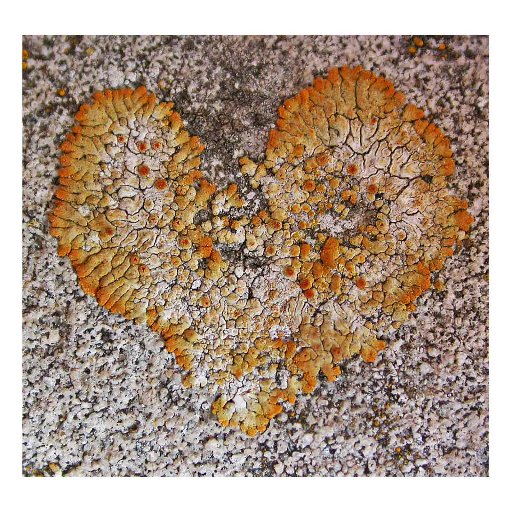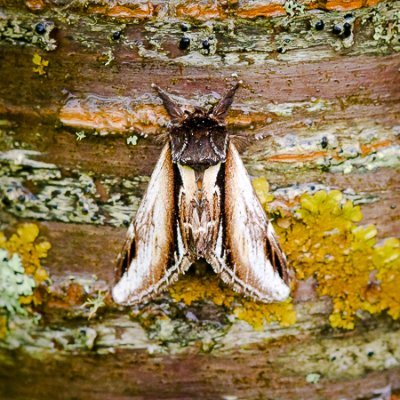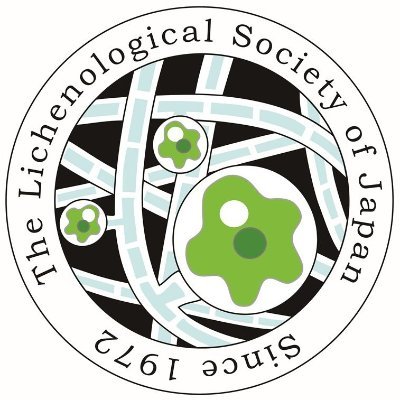
Mark Powell
@obfuscans3
Followers
2K
Following
4K
Media
6K
Statuses
18K
Lichens. Anyone with a hand lens can make discoveries. Add a microscope and a couple of chemicals and you can help rewrite the books.
lowland England
Joined March 2017
Lecidella elaeochroma makes a nice subject to practise on when beginning to make microscopic investigations. The apothecia are colourful inside despite looking black and opaque from the outside. Thread with some notes about microscopic investigations.
1
5
34
Lecidella elaeochroma contains arthothelin, a xanthone that gives a characteristic UV+ orange reaction. This can be weak, and sometimes easier to observe as a K/UV+(wet) mint-green reaction. My lichen shown in (shaded) visible light, in UV light, and with K-test in UV-light. /2x
0
2
11
Lecanora hybocarpa auct br from same High Force oak as Glaucomaria carpinea below. (Note small G carpinea thallus on left.) L hybocarpa auct br is probably England’s most widespread L subfusca-group #lichen, but it has few records in this area. Thread. /1 https://t.co/vwe80mP6jw
Glaucomaria carpinea on oak twig collected just near High Force (VC66/NY82/Dec23). Apothecia not as thickly pruinose as I’ve normally seen on East Anglian material, but there were many G. carpinea thalli on the twig, some more pruinose than others. ID confirmation in thread. /1
1
2
11
Various lichens which used to be largely restricted to 'old woodland' have recently spread into the wider landscape. Normandina pulchella and Strigula taylorii are just two that spring to mind. Perhaps C. luteum is starting to behave in the same way?
0
0
10
I still have vivid memories of the 1999 solar eclipse, undoubtedly the most spectacular one that I will ever witness.
Observations of the solar eclipse, 11th August 1999, Bedfordshire. I have rediscovered the notes I took. I'm glad I didn't rush off to Cornwall where totality was largely obscured by cloud. I preferred to witness near-totality (in good conditions) at home.
0
0
6
#地衣類 everyday 地衣類観察に用いるルーペは10~15倍程度がよい。正しい使い方は、①ルーペを眼の近くに固定し自分が対象物に近づいて観察。②眼の負担軽減のために両眼をあけて観察。【ライケン13(1)参照】
0
16
60
A thread about the lichenicolous fungus Laetisaria lichenicola, including the surprising way it was added to the British list in 2015 and hints about identifying/recording it.
2
15
101
During my early microscope investigations, I noticed two features of C. chalybeia not mentioned in the books. The rounded hyphae of the hypothecium are somewhat distinctive. At the time I first saw the pale patches on the photobiont cells, I had no idea they were haustoria.
1
1
7
Catillaria chalybeia in section. Some individuals lack the dark green pigment and then they may be confused with the var. chloropoliza which is a different sort of thing occurring in more specialised habitat.
1
1
8
William Borrer's description of the thallus of Catillaria chalybeia, written in the 1830s, captures its appearance better perhaps than any other account that I have seen.
1
2
5
West and East facing sides of the limestone gravestone to Mercy Ann Smith, died 1911. The latest stone to be scrutinised in detail. 24 lichen spp. present, over a third of which would have been unrecognised or likely misinterpreted at the start of this century. Thread
2
8
26
I found a technique to make reasonably good drawings, initially of microscopic features, but it works for anything that can be shown on a laptop screen. There are however some advantages to drawing freehand... Thread.
Tracing or thin paper is placed over screen and basic outline gently traced. Then the detail, annotations etc. can be added from direct observation.
2
1
7
My favourite type of 'art' is an annotated drawing (even if just a rough sketch), a pleasing visual summary of someone’s careful observations.
0
1
19
The Lichen Flora of Great Britain, Ireland and the Channel Islands Rev. W. A. Leighton (1879) C and K were already in use at this stage. Many of Leighton's comments still seem apposite today. Thread
1
1
4
I recommend practising the K/UV reactions before using them to aid identification. L. elaeochroma (K/UV+ pale green when wet) on the left. L. hybocarpa (K/UV+ yellow developing as the spot dries) on the right. Thread
1
2
3
Fuscidea lightfootii, the first image showing two different morphs and the second demonstrating the intense white fluorescence of the medulla. Why do I post about F. lightfootii today? Thread.
1
3
24
An amenity sycamore tree with abundant Physcia adscendens and Xanthoria parietina. Hardly worth looking at? Well, it supports some nice examples of a lichen described as new to science in 1999. A thread about Lecanora compallens.
1
3
27
Lecanora compallens, close up of edges, the first showing a typical narrow zone of minute thalline warts. The second image shows an edge where soredia extend to the margin, obscuring any thalline warts.
1
2
12
It suddenly dawned on me just how useful UV torches and the 'new' K/UV tests have become during fieldwork. Thread, containing some examples of common identification issues which are now more easily resolved in the field.
2
2
13
Weddellomyces epicallopisma has almost completely killed its host in some patches.
1
3
10


































